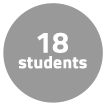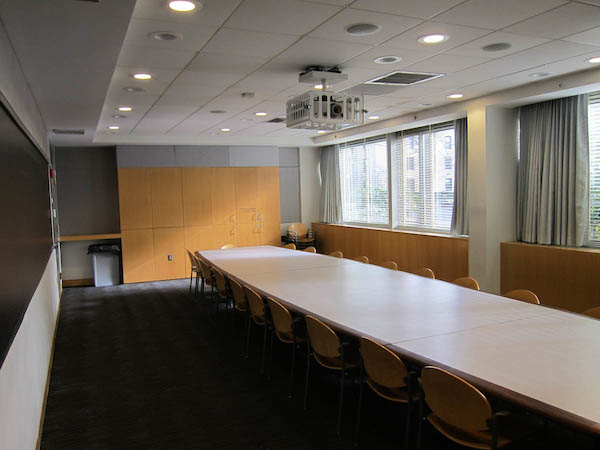This Course at MIT pages are part of the OCW Educator initiative, which seeks to enhance the value of OCW for educators.
Course Overview
This page focuses on the course 21W.755 Writing and Reading Short Stories as it was taught by Shariann Lewitt in Spring 2012.
This is a course in writing the short story, and it is also intended as an introduction to writing fiction generally. As such, it serves students who are exploring their interest in fiction, but may have no prior experience, and may discover that they prefer reading to writing, or non-fiction to fiction. All students learn what writing fiction requires, and some of the ways writers approach texts, as opposed to the methods of critics and scholars with which they may be more familiar.
Course Outcomes
Course Goals for Students
The overall goal for this course is to introduce students to writing fiction, through the form of the short story. Students learn how a writer approaches a short story, basic structures, and techniques for creating plot and characters. Further, students gain some idea of how a writer incorporates place, time, description, and tension into a short story. The hope is for students to discover whether they want to continue writing after the course. Students come away with a greater appreciation as readers for the work writers do in crafting short stories.
Possibilities for Further Study/Careers
21W.757 Fiction Workshop is the most common next course for students who want to continue writing, along with various others in the Creative Writing/Fiction arc.
Some students decide that their love of fiction led them more toward reading and literary analysis, and those students pursued Literature courses in Short Story, the Novel, and writers whose work interested and inspired them.
Instructor Insights
Below, Shariann Lewitt describes various aspects of how she teaches 21W.755 Writing and Reading Short Stories.
Course Development & Organization
I have a theater background and I use a lot of theater exercises in developing character. I was taught by the workshop method and I teach it. Pretty much all writers participate in workshops, lots of workshops, endless workshops as part of their training. We do this because it works. We all learn to write better at every stage from the workshop process, so it is the centerpiece of all my Creative Writing classes, as it is the central piece of every other Creative Writing course.
The assigned stories come from all over the world and cover the period from the mid-18th Century to 2005. Students at this level need to read a broad range of stories. While most are avid readers, the great majority prefer to read novels to short stories. I’ve changed a few of the stories I’ve used in the course due to student feedback. When students didn’t respond well to a story, or had trouble extracting the technical details from it, it didn’t suit the purpose of the class. I’ve also learned where students can struggle or are surprised at various aspects of writing and life that they must understand in order to write fiction.
I also use my own stories and how I learned to write from them in the class. I don’t assign my own stories as readings, but I will talk about my interactions with editors, about how I work on a story, how I revise it, how I integrate the characters and the central ideas, how I develop the setting and such. I’ll often talk about the problems I’m dealing with in whatever project I’m working on at the moment, especially as it might relate to the specific content of the lesson of the week. This is not because of my ego (I often tell students about my failures and problems!) but so that I can show them how a working professional deals with the same issues I’m presenting to them, and how I use the techniques I’m teaching them in my own published work. I want them to understand how the exercises we do in class translate into finished fiction.
I also incorporate what I know from my writing community. As a science fiction writer, a member of the Science Fiction & Fantasy Writers of America, someone who goes to conventions, who has friendships with colleagues, and is a member of professional workshops, I know about how other writers write. I can talk about my own process, but can also tell stories about how other writers write, how this or that professional writer has used a specific technique or how I got an exercise from another person. Writers work differently. I want my students to understand that there is no right way to write, there is only their way. I can draw on my greater community of writers (and in the genre world we’re a fairly friendly and close group) to give them the sense of the range of how professionals work.
Assessment
I assessed student learning by the portfolio method: each student handed in their first drafts and final rewrites of all three required stories at the end of the semester. Students were permitted as many rewrites as they desired and could rewrite until the portfolio was submitted. Nothing was graded before the portfolio.
I also used contract grading. If students completed all the work in the class seriously and to the best of their ability, came to class prepared, participated, did all assignments, and clearly showed that they were putting forth their best efforts, they were guaranteed a B. To do better they had to show some ability, talent, great improvement, etc.
I used the contract grading method to encourage students to take risks. I didn’t want students to make “safe” choices because they were worried about a grade. I wanted them to put that concern aside and really explore. I wanted them to feel free to write harsh, edgy, experimental stories if those were the stories that called to them. I wanted to encourage them to be fearless, and contract grading is a kind of safety net for stimulating real creative work.
I used the portfolio form of assessment because learning in this practice is cumulative. I wanted to encourage students to keep applying new knowledge to their work, to keep refining their projects, and to feel encouraged to improve their stories as they gained new insights. In the real world writers are permitted to rewrite and improve their work until it goes to copy edit/page proof, and I felt that students should work under the same conditions professional writers do.
Curriculum Information
Offered
Every fall and spring semester
Student Information

Breakdown by Year
Varies widely each semester, but the majority are sophomores and juniors, a few seniors, and one or two freshmen.
Typical Student Background
Students come to this course with a huge mix of skills, interests, and experiences. Some are planning to major in Creative Writing, some have a deep and abiding interest and have been writing since they were children, and a few have taken it because a friend talked them into it or because they like video games and thought writing stories seemed like fun. I’m sure a few have taken it because they needed a HASS class and this fit their schedule. Most have little to no experience writing fiction, though some have taken Playwriting or Poetry.
Enrollment Cap
The enrollment cap is eighteen. Eighteen can be a bit unwieldy for this class, but is doable with two workshop groups. The class has been very popular and often reaches this cap.
Ideal Class Size
The ideal class size is 6-12. More than 12 and we have to split into two groups to workshop every story, which means that I cannot participate as a full workshop member for every workshop (I have to split my time and attention between both groups). Fewer than six and discussions/workshops become a bit too prone to groupthink.
Assessment
I use what is called "contract grading," which means that each student and I agree on the following contract.
You will be guaranteed to receive at least a B in this class if you do the following:
- Attend class regularly
- Do all assignments and exercises seriously, with the full weight of your consideration, and on time
- Come to class prepared
- Participate actively in the workshop process, giving full and thoughtful responses to your classmates' work.
The requirements to earn an A are harder to quantify, but they include more sophistication and grace in the writing, lively storytelling, and prose that approaches publishable quality.
How Student Time Was Spent
During an average week, students were expected to spend 12 hours on the course, roughly divided as follows:
In Class/Lecture
- Met 2 times per week for 1.5 hours per session; 26 sessions total; mandatory attendance
- The first seven weeks of class were a mix of lecture and discussion (about 50% lecture, 30% discussion, and 20% exercises). As an introductory class, I must assume students know very little about how stories are put together or about any of the techniques writers use. So I lectured, then we discussed the assigned stories so that students could see how great writers have created characters, plots, settings, and emotional impact using the techniques explained in the lectures. Then we did exercises so that they could attempt to use a specific technique themselves.
- The last half of the class was devoted almost entirely to workshop, with a few mini-lectures thrown in if I felt a particular topic merited particular attention. Workshop is the most valuable tool writers have and we never stop workshopping, even as professionals. I taught workshop technique, and then we workshopped all the assigned stories for the class.
Out of Class
- Reading published works and all works by fellow students submitted for workshop.
Writing, including three pieces to be submitted for workshop, which were revised based on class discussion and written feedback, with final drafts turned in at the end of term.
Semester Breakdown
| WEEK | M | T | W | Th | F |
|---|---|---|---|---|---|
| 1 |  |  |  |  |  |
| 2 |  |  |  |  |  |
| 3 |  |  |  |  |  |
| 4 |  |  |  |  |  |
| 5 |  |  |  |  |  |
| 6 |  |  |  |  |  |
| 7 |  |  |  |  |  |
| 8 |  |  |  |  |  |
| 9 |  |  |  |  |  |
| 10 |  |  |  |  |  |
| 11 |  |  |  |  |  |
| 12 |  |  |  |  |  |
| 13 |  |  |  |  |  |
| 14 |  |  |  |  |  |
| 15 |  |  |  |  |  |
| 16 |  |  |  |  |  |
 No classes throughout MIT
No classes throughout MIT Seminar session. Class meeting.
Seminar session. Class meeting. Workshop
Workshop No class session scheduled
No class session scheduled Due Date
Due Date

 Room 1 of 1
Room 1 of 1 